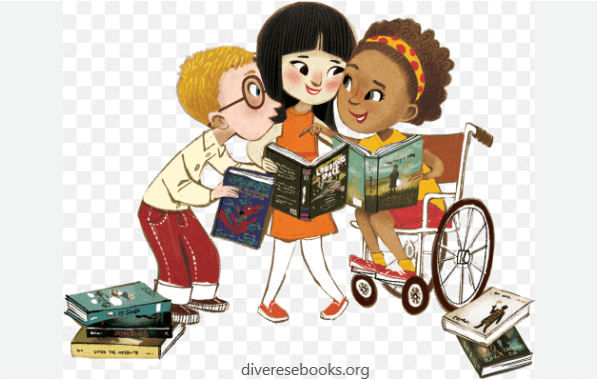In recent years, children’s books have made a lot of progress in becoming more varied. The number of books featuring diverse authors, illustrators, and characters has grown- giving children a chance to see themselves reflected in the stories they read.
In 2018, a report from the Cooperative Children’s Book Center (CCBC) revealed that 50% of children’s books featured white characters, while only 23% depicted characters of color, including African American, Asian, Latinx, and Native American. By comparison, in 2023, nearly 50% of children’s and teens’ books centered on “people of color”, which marked a a significant increase from previous years.
Comparison and Analysis
While these numbers reflect positive change, it’s important to take a deeper look at this representation. A study published in the Quarterly Journal of Economics examined award-winning children’s books, such as Newbery and Caldecott medalists, and found that “white male characters are still overrepresented”.
Caroline Tung Richmond, executive director of the nonprofit organization We Need Diverse Books, emphasized the importance of children seeing themselves in stories, “This (representation) helps kids feel valued, keeps them engaged in reading, and allows them to learn about different cultures and identities, fostering empathy.”
However, while the data indicates a trend towards diversity in the publishing industry, the impact of self-publishing is also a factor that needs to be part of the conversation.
The Role of Self-Publishing in Diversifying Children’s Literature
Self-publishing has opened doors for many authors who might have found traditional publishing paths challenging—regardless of their topic choice or personal identity.
It’s true that platforms like Amazon’s Kindle Direct Publishing (KDP) and IngramSpark have empowered authors from underrepresented communities to share their stories without needing approval from traditional gatekeepers. According to a Bowker report, over 1.6 million self-published books were released in 2020 alone, indicating a thriving independent publishing scene that is more inclusive and willing to take risks on stories that traditional publishers might overlook.
In 2021, a study by the Authors Guild found that self-published authors, particularly those writing in niche genres or featuring diverse characters, are finding success in reaching their intended audiences. These authors often report that self-publishing allows them to retain creative control, including the ability to represent diverse characters and stories authentically.
It’s clear that the progress toward diversity in children’s literature extends beyond traditional publishing, with self-publishing playing a crucial role.
Moving Forward
As the landscape of children’s literature becomes more diverse, it’s important to acknowledge that there is still work to be done for true inclusivity. The rise of self-publishing has certainly helped to bring more diverse stories to young readers, offering a platform for voices that might otherwise go unheard.
Readers hold significant power in this movement. Where they choose to spend their time and money can greatly influence the industry. By supporting both traditional and self-published works, readers can help move the industry toward a future where every child can see themselves in the books they read.
“I’ve sold over 5 million copies- and I’m self published”- David Goggins, author of You Can’t Hurt Me
An avid book reader and proud library card holder, Angela is new to the world of e-Readers. She has a background in education, emergency response, fitness, loves to be in nature, traveling and exploring. With an honours science degree in anthropology, Angela also studied writing after graduation. She has contributed work to The London Free Press, The Gazette, The Londoner, Best Version Media, Lifeliner, and Citymedia.ca.


